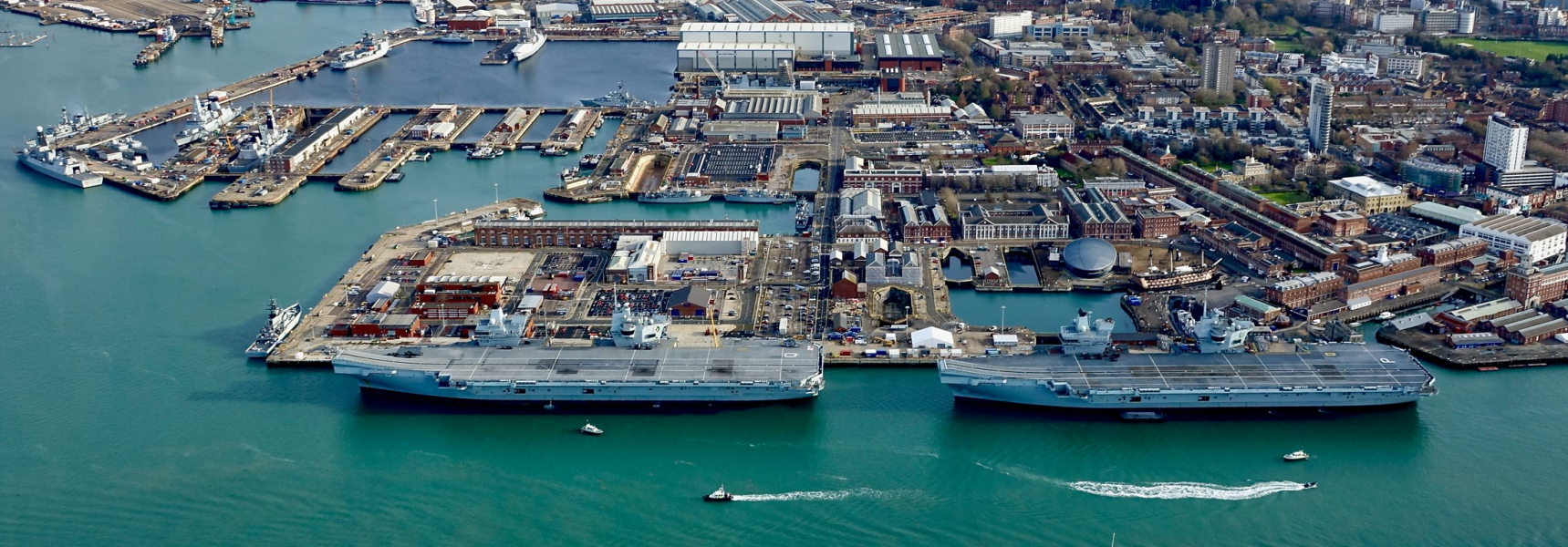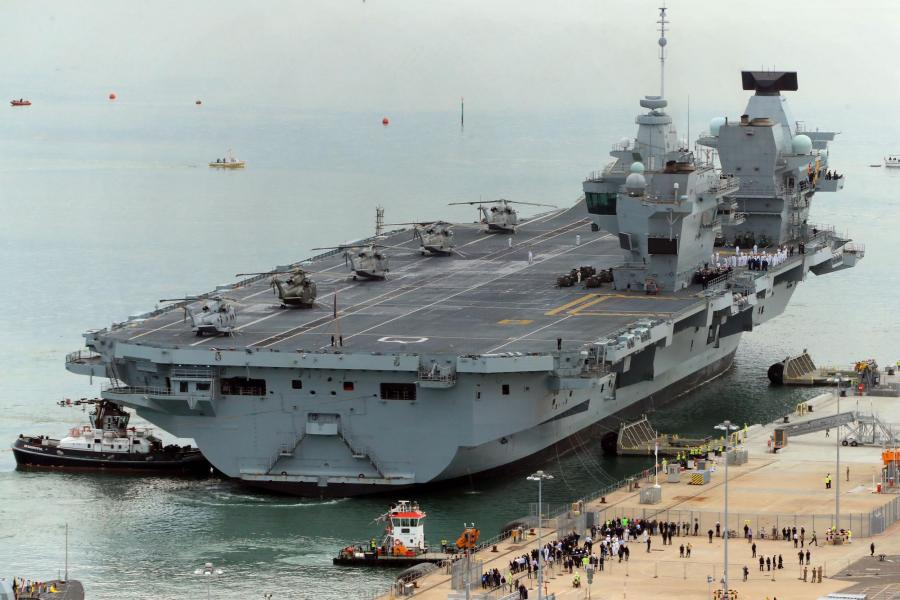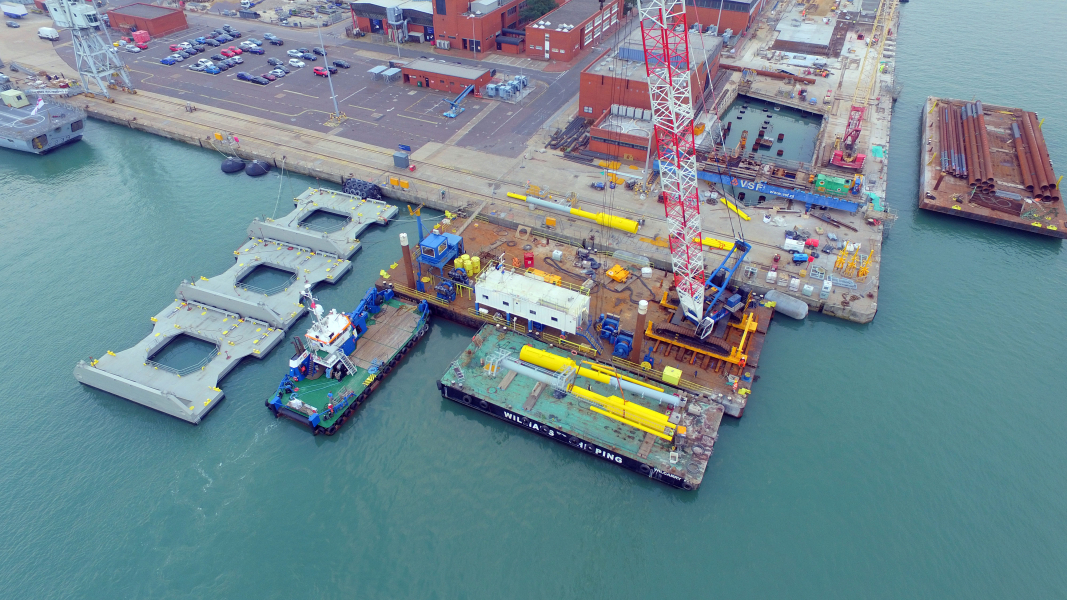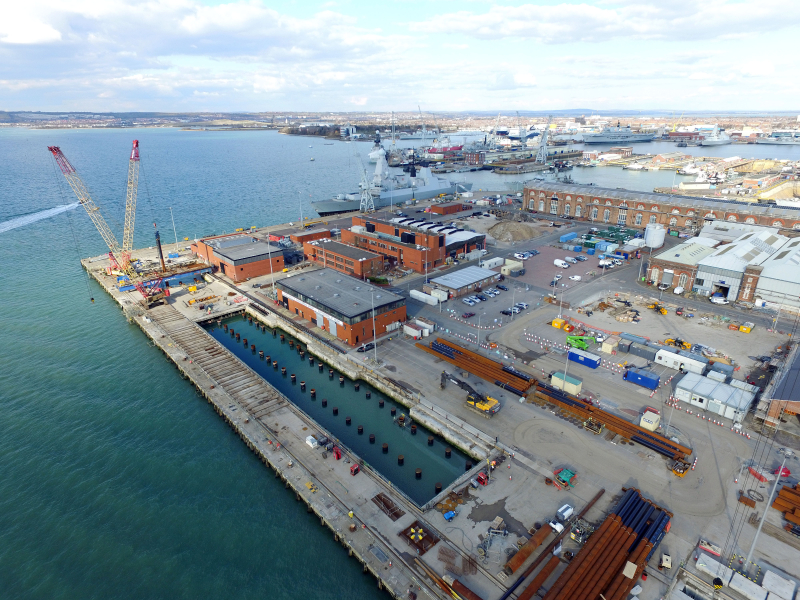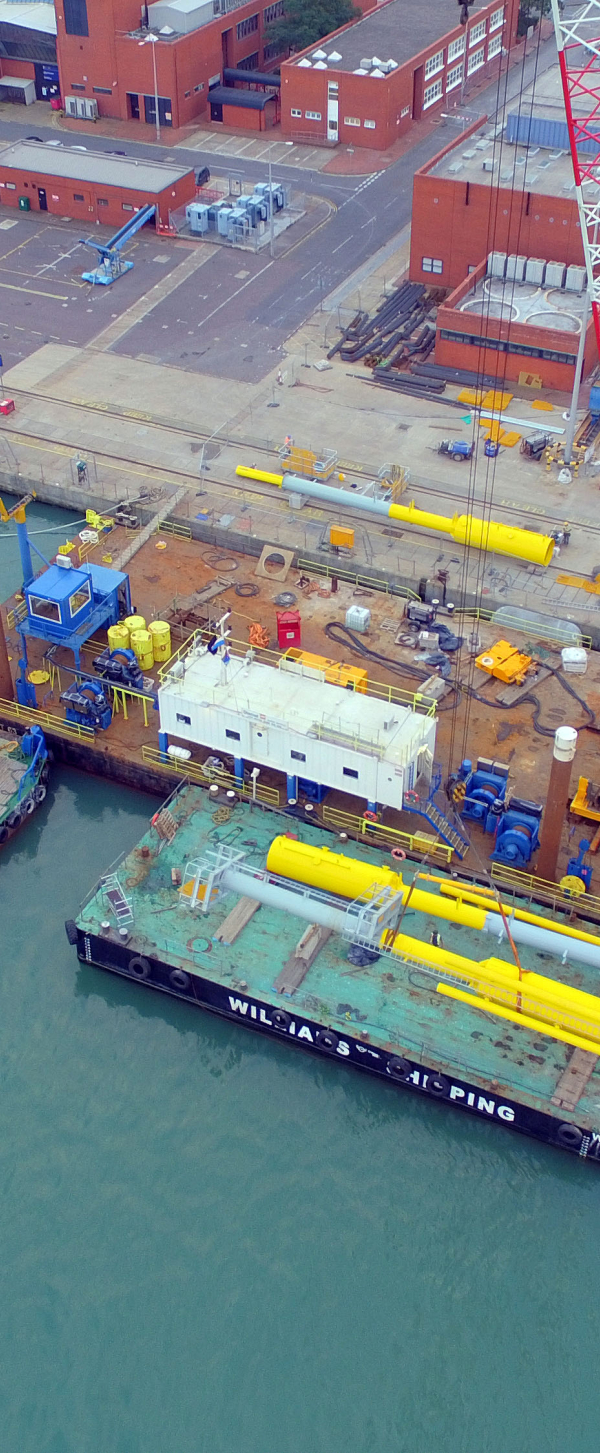
HMNB Portsmouth QEC Base Porting Infrastructure
The Queen Elizabeth class is a class of two aircraft carriers which are the central components of the UK Carrier Strike Group. Each with a displacement of 65,000t, the two vessels - named the HMS Queen Elizabeth and HMS Prince of Wales - are the largest warships ever constructed by the Royal Navy.
Purpose
With HMNB Portsmouth selected as the home base, the Defence Infrastructure Organisation needed 21st-century moorings to accommodate the two carriers. We were contracted to design and construct upgrades to the existing jetties that were up to 90 years old and install other new infrastructure to support the vessels.
What we did
We demolished and replaced the defective sections of the existing jetties and replaced these sections with tubular piled and concrete deck structures, including strong points to support the 80t fender spacer units. We also installed new infrastructure such as navigation aids, substations, and a dedicated high voltage electricity supply to power the carriers when they are in berth.
We identified weak points so we could retain the structurally sound parts of the existing decks. Detailed laser scanning and site/ground investigations helped us to identify weak areas and design structures to take the fender support unit loadings.
After breaking out the deck sections being replaced, we installed pile sleeves over the existing piles. We then placed precast pile caps and spanning panels, stitched together with concrete pours.
We preserved a historic dock wall that the Princess Royal Jetty was propping. A static load test, informed the need to strengthen the existing deck edge, reducing the risk of damage through overloading.
The fender spacer units are needed to allow the carriers to berth safely, spanning the 20m of hull flare. We designed, fabricated, and installed the 80t structures, which can be removed and safely stored when the carriers are not berthed. At each fender support unit location, we used a 350t crane barge to install fender piles, precast pile caps and fender panels.
We used a crane barge to install 14 navigation aids to guide the carriers through Portsmouth Harbour, mooring dolphins, and a pre-fabricated access walkway at Victory Jetty’s southern end.
Our shore-power supply reduced energy consumption caused by ships burning generator fuel when berthed. We built a substation and installed 2.6 miles of cable to connect to the national grid. We also developed bespoke rotary frequency converters, to transform the typical 50Hz frequency to the 60Hz that ships operate on.
We designed and installed a bespoke telescopic cable boom to bridge the gap from the jetty to the vessel. This sends the 11,000-volt shore-power supply to the berthed carriers and tracks the ship to maintain connection during tidal movements.
Project successes
We brought the Princess Royal Jetty into service three months earlier than the client’s original programme. In August 2017, huge crowds lined Portsmouth Harbour to welcome HMS Queen Elizabeth for the first time, gaining nationwide media coverage. We went on to complete Victory Jetty two months early, and the two carriers were able to berth next to each for the first time in November 2019.
Our sustainable construction efforts were recognised through the winning of the CEEQUAL ‘Very Good’ Whole Team Award. CEEQUAL is the world’s leading sustainability rating scheme for infrastructure, engineering and public realm projects. The Defence Infrastructure Organisation also presented us with a Sanctuary Award, which recognises outstanding sustainability across the defence estates.
